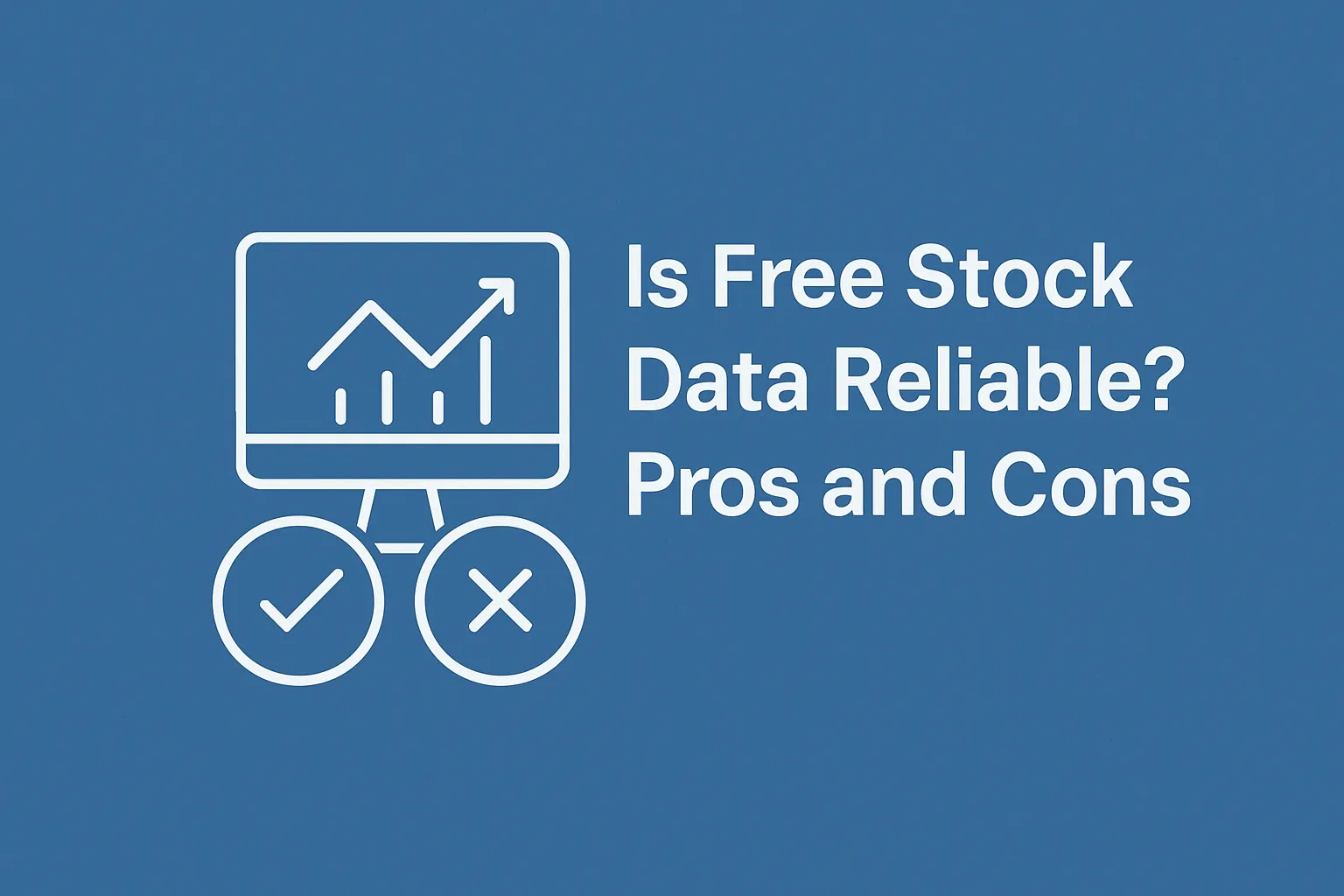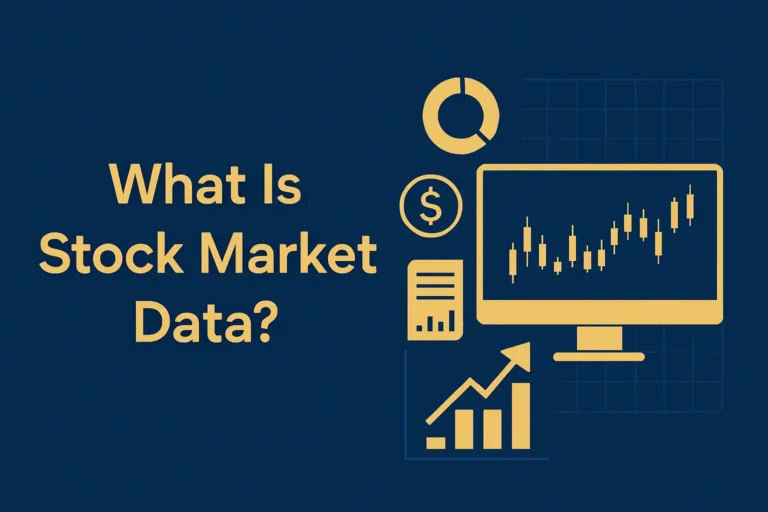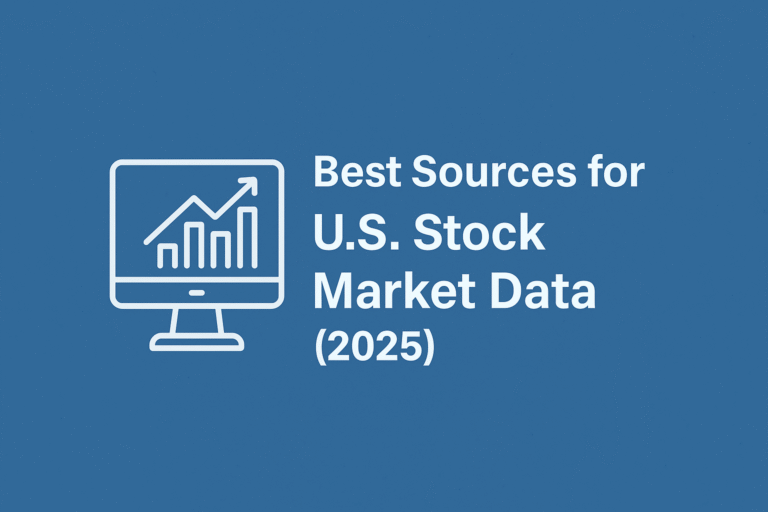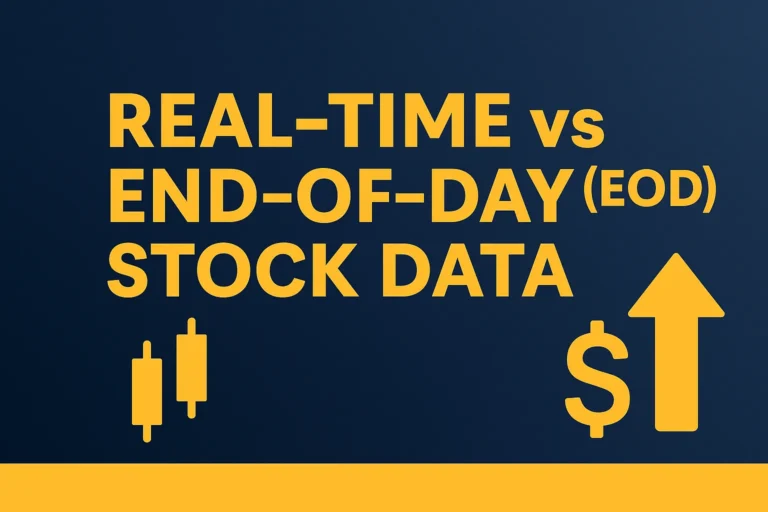Is Free Stock Data Reliable? Pros and Cons
In a world full of free stock screeners, trading apps, and financial websites, it’s tempting to rely on free stock data for your investing and trading decisions. But is free data reliable, or could it hurt your strategy?
This article explores the pros and cons of free stock data, its accuracy, and whether it’s suitable for your trading needs in 2025.
What Is Free Stock Data?
Free stock data refers to publicly accessible market information provided at no cost by websites, apps, or APIs. It may include:
- Stock prices (real-time or delayed)
- OHLC data (Open, High, Low, Close)
- Trading volume
- Company fundamentals (P/E, EPS, etc.)
- News and sentiment
Popular sources: Yahoo Finance, TradingView (free plan), MarketWatch, Google Finance, Alpha Vantage, Webull.
Pros of Free Stock Data
✅ 1. Cost-Effective
Free data helps beginners and casual investors avoid expensive subscription fees while learning the market.
✅ 2. Easily Accessible
No logins, credit cards, or installations are needed on many platforms like Yahoo Finance or Google Finance.
✅ 3. Enough for Most Retail Investors
For swing trading, long-term investing, or tracking broad trends, free data is often sufficient.
✅ 4. Integrations with Tools
Many free data sources integrate with Excel, Google Sheets, or Python scripts (e.g., Alpha Vantage, IEX Cloud free tier).
✅ 5. Education & Research
Perfect for backtesting, strategy testing, or learning chart patterns before moving to live trading.
Cons of Free Stock Data
❌ 1. Delayed Quotes
Most free data is 15–20 minutes behind unless it comes from IEX or direct broker feeds.
Example: Yahoo Finance uses real-time IEX data for some stocks, but not all.
❌ 2. Lack of Market Depth
Free platforms usually don’t include Level 2 data like bid/ask spreads or order book info, critical for intraday traders.
❌ 3. Limited Historical Range
Historical data may be shallow (e.g., 1–5 years only), which is not ideal for long-term research or backtesting.
❌ 4. Lower Update Frequency
APIs like Alpha Vantage or Google Sheets may limit how often you can pull updated data, restricting real-time use.
❌ 5. No Support or SLAs
You can’t expect uptime guarantees, support, or issue resolution for free services.
When Is Free Stock Data Good Enough?
| Use Case | Is Free Data Enough? |
|---|---|
| Long-term investing | ✅ Yes |
| Learning charts or fundamentals | ✅ Yes |
| Portfolio tracking | ✅ Yes |
| Intraday trading | ❌ No |
| Algorithmic trading | ❌ Not recommended |
| Institutional analysis | ❌ Use paid data feeds |
How to Improve Reliability of Free Data
- Cross-check from multiple sources (e.g., Yahoo + Google + broker)
- Use IEX-based platforms for real-time U.S. stock data
- Automate alerts via APIs like Webull or TradingView
- Upgrade to premium if timing or accuracy becomes critical
Reliable Free Stock Data Providers (2025)
| Platform | Data Type | Real-Time | Notes |
|---|---|---|---|
| Yahoo Finance | Quotes, financials | IEX only | Widely trusted |
| TradingView (Free) | Charts, screeners | IEX | Great for chartists |
| Alpha Vantage (Free tier) | API for OHLC, indicators | Limited real-time | Best for devs |
| Google Finance | Price lookup | Delayed | Simple, not deep |
| Webull | App-based quotes | Real-time | Needs account |
| MarketWatch | Basic quotes | IEX (limited) | Great UI |
Conclusion
Free stock data is reliable — but only within limits. It’s excellent for learning, research, long-term investing, and even light strategy work. But if you’re trading intraday, automating execution, or managing significant funds, it’s worth upgrading to a paid data service for full accuracy, speed, and depth.
Evaluate your use case carefully and know when to invest in premium tools.
FAQs
1. Is Yahoo Finance data accurate?
Yes — but only for IEX stocks in real-time. Other quotes may be delayed.
2. Can I use free APIs like Alpha Vantage for trading bots?
You can, but limited rate and delay might affect performance.
3. Do free data platforms include dividends and splits?
Some do, like Yahoo Finance and EOD Historical Data (CSV).
4. Is free stock data safe to use?
Yes, as long as it’s from reputable platforms.
5. When should I consider switching to paid data?
If you need full market depth, faster execution, or higher data frequency.




